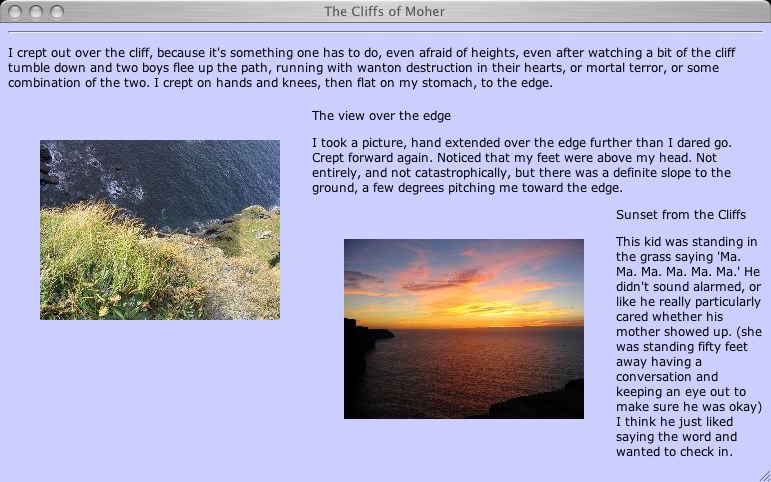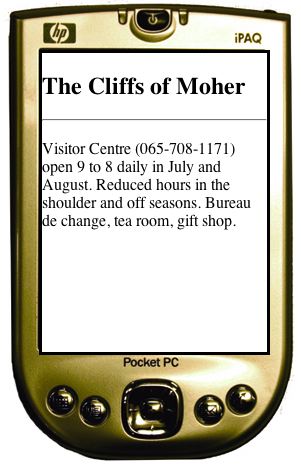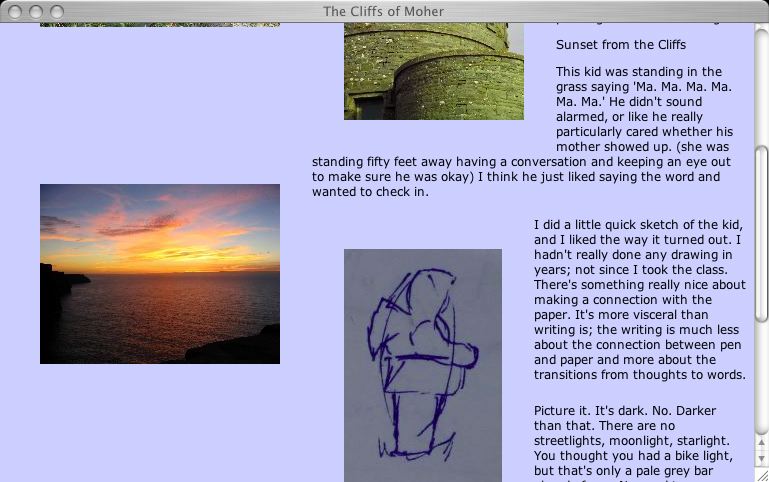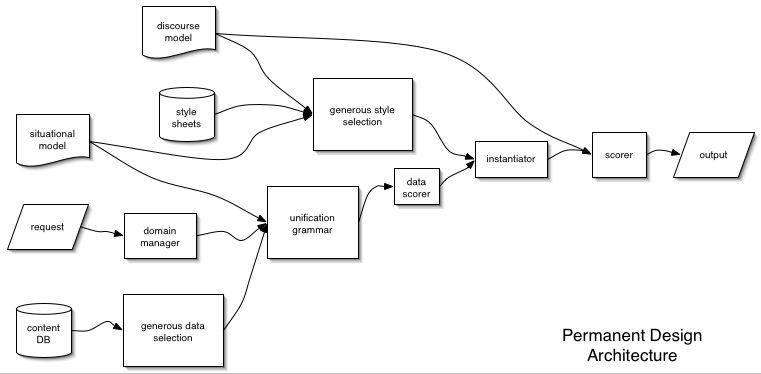
Guide = -1 Fact = -1 Detail = 3 Flavour = 3 Creative = 3 Travelogue = 3 Personal = 4 Culture = 2 Family = 2 Friends = 2

As we move toward truly adaptive multimodal designs, the complexity of the systems we build is increasing exponentially. We need a way to codify design criteria so that even as a system adapts it remains usable, and, in some sense, designed.
'Travel writing' can have many different meanings, from text listings of places with their opening hours and costs in the Rough Guide to the writings of authors like Paul Theroux, which give the feel of a place, but no idea what the train schedule will be.
In different situations, we want different versions of the information. In the afternoon, we want to know what time the Louvre will close. Just before bed, though, we might want to read descriptions of the history, the art, the people who have been here before.
Travelogue is a system designed to give the user a chance to interact with different versions of a document, depending on their personal preferences (interest in art, food, personal description), the device they're using to display (which will change the length of the desired output and possibly the number of pictures used), and their current situation.
Travelogue gives give the user a chance to interact with different versions of a document, depending on their personal preferences, the device they're using to display the document, and their current situation.
Bob wants to read a travelogue. He doesn't know the author and doesn't want to see personal information. He just wants to be entertained.

|
Guide = -1 Fact = -1 Detail = 3 Flavour = 3 Creative = 3 Travelogue = 3 Personal = 4 Culture = 2 Family = 2 Friends = 2 |
Esme is visiting Ireland and wants a brief reminder.

|
Fact = -1 Detail = 1 Flavour = 2 Creative = 0 Travelogue = 2 Personal = -1 |
Iris is a friend of the author. She wants to see pretty much everything, including sketches, photographs of friends, and anecdotes.

|
Guide = -1 Fact = -1 Detail = 3 Flavour = 3 Creative = 3 Travelogue = 3 Personal = 4 Culture = 2 Family = 2 Friends = 2 |
Travelogue is a part of Permanent Design, and uses generous generation of variants to create a variety of display options that are close to what the user wants, and then a rigorous scoring metric to choose the best one. The input is in the form of xml files containing the descriptive content and the user configuration.
In Permanent Design, I am creating an architecture for the generation of multimodal systems, taking into account the preferences and needs of a given user or situation. This adaptability enables the generation of more user-centric designs by using generous data selection, then weeding out suboptimal designs with a scoring algorithm.
Permanent Design uses:
to generate the appropriate interface for the situation at hand.
A second project will attempt to bring computational power to bear in creating improvisational theatre. This works from a repertory of script segments, inspirations for scenes, and segments of dialogues, and creates a collection of scripts appropriate to the actors and time available, taking into consideration overall design constraints like rhythm and scene texture. The goal is to use constraints to free the actors to put their energy into creative and performance work, and to surprise them, giving different dynamics to the work as experienced by the audience.
Future systems will create more detailed interactions for a single user, or for a theater full of users, that is created for the occasion and designed, by the system, to fulfill the needs of the situation.

| [to Adaptive Speech Interfaces] | [To MLE] | [To UCD] | [To Fred Cummins's Homepage] |